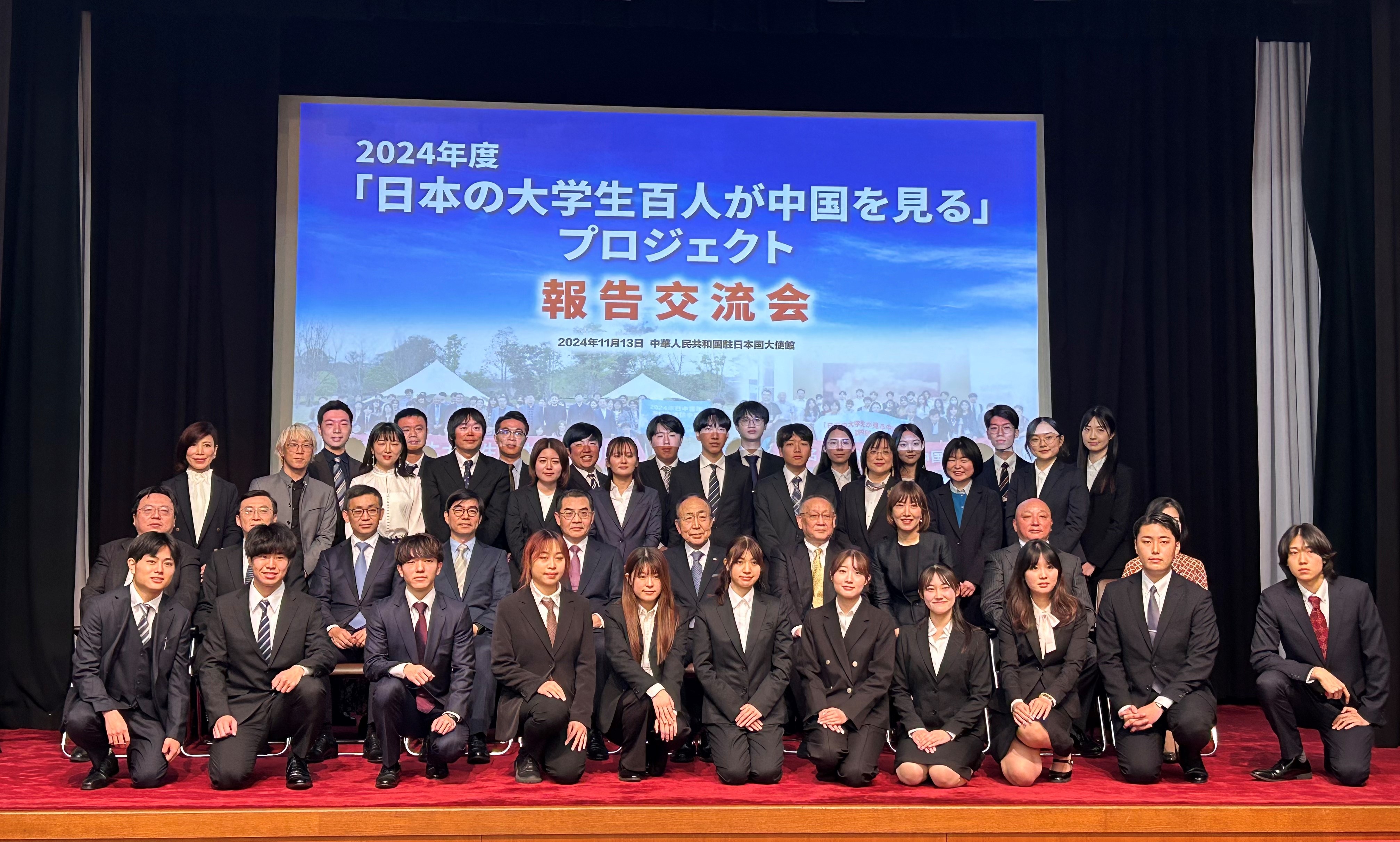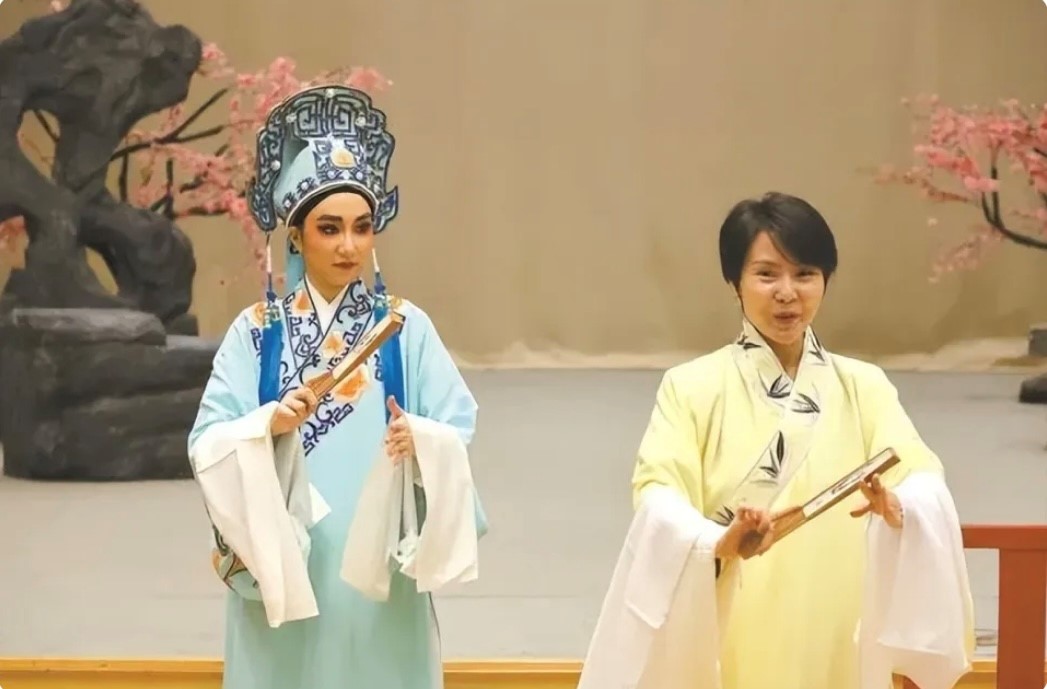
Representatives from the “100 Japanese University Students Visiting China” program gathered in Tokyo on Wednesday to share insights and reflections from their trips. They expressed a strong desire to gain a true understanding of China and to foster mutual respect and friendship between the people of Japan and China.
Their visit to Sichuan province in March spotlighted cultural links between the two nations, including experiences with the giant panda Xiang Xiang after her return to China, relics from the Three Kingdoms era (AD 220-280), and Sichuan cuisine.
The September visit to Shanghai brought a focus on technological innovation, historical heritage, smart city developments, and urban planning.
Tsubasa Tajima, a student of the Faculty of Science and Engineering at Chuo University, was particularly struck by the rapid advancements in China’s tech sector. During a visit to Chinese tech giant Baidu in Shanghai, he observed autonomous driving technology up close.
He said that although Japan also develops such technology, he felt that China was leading in practical implementation.
“I was particularly impressed with Baidu’s technology for detecting pedestrians and obstacles and automatically adjusting routes. It seemed that China’s autonomous driving technology is already at an operational stage,” said Tajima.
“Watching Meituan’s drone delivery system in real-time — from placing an order by smartphone to having it delivered by drone — was also incredible. I never expected to see drones delivering food and daily goods so soon,” he added, referring to the shopping platform.
Risa Nomachi, a Chinese major at Chuo University, had a memorable experience watching Yue Opera in Shanghai. Recognized as an intangible cultural heritage, Yue Opera is a traditional Chinese performance art.

“Before this visit, I knew almost nothing about Yue Opera, but I was immediately captivated by its beauty when I saw it live,” Nomachi said.
“The performance featured graceful movements and a visually stunning stage, and I couldn’t take my eyes off it,” she said.
“I was especially drawn to the fluid, expressive movements throughout. I’m eager to learn more about the history and stories of Yue Opera and plan to see another show in Shanghai soon.”
Nomachi also noted that the “100 Japanese University Students Visiting China” program gave her insights into aspects of China she could only experience by being there.
Alongside historical landmarks and cultural heritage, she said she was impressed by China’s modern lifestyle, including the wide-spread use of electronic payments.
“Throughout my entire stay in Sichuan and Shanghai, I didn’t use cash even once — it was surprising to see electronic payments accepted even in small local shops,” she said.
Chinese Ambassador to Japan Wu Jianghao highlighted the value of creating opportunities for young people from both countries to share experiences, which he believes builds a foundation for future exchanges and strengthens the connection between Japan and China.
Sun Ran, editor-in-chief of Live Japan, the country’s most influential Chinese-language media, emphasized that youth exchanges between Japan and China form the grassroots foundation of friendship and represent a hopeful future for bilateral relations.
“The program gave students a new perspective on China and facilitated personal growth. Some students have chosen to continue their studies in China, while others, especially those fluent in Chinese, have found jobs related to China,” said Sun, who is also the leader of the delegation.
“One Waseda University student, inspired by Sichuan cuisine during her visit, went on to study Sichuan cooking in Chengdu and hopes to promote it internationally,” said Sun.
Shi Yong, minister at the Chinese embassy in Japan, noted that the Japanese students’ visits strengthened their understanding of traditional Chinese culture.
He stressed that the China-Japan friendship benefits from deepened cultural connections that foster mutual knowledge and affection in the current era.
Shi said that experiences such as visiting Baidu to learn about self-driving technology or using Meituan for drone delivery introduced students to a side of China they had not previously imagined.
Interacting with new people also helped bridge geographic and informational divides, giving the students a direct understanding of the country, Shi added.
The students shared their experiences on social media, offering a fresh perspective on China through the lens of youth, which gained significant attention from Japanese and Chinese media.
This sharing helped promote deeper mutual understanding, Shi said, concluding that advancing China-Japan friendship requires more robust platforms for youth exchanges, which will allow future generations to connect and collaborate.
Contact the writer at jiangxueqing@chinadaily.com.cn


